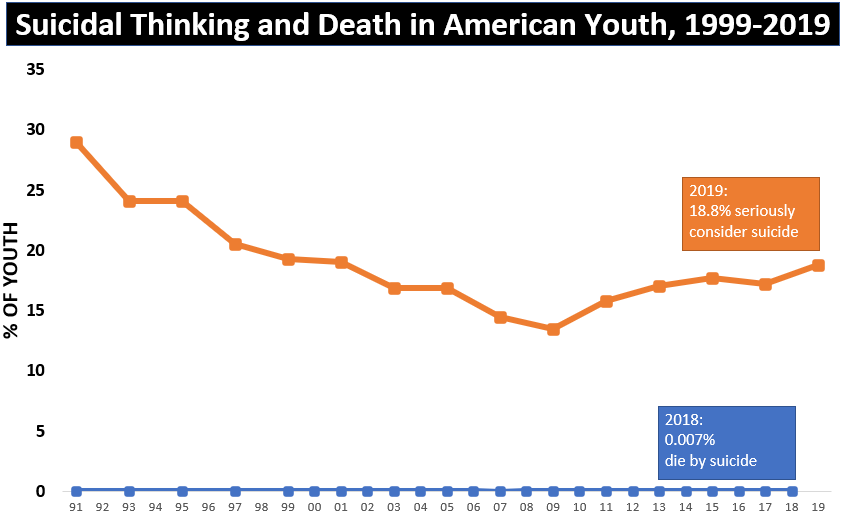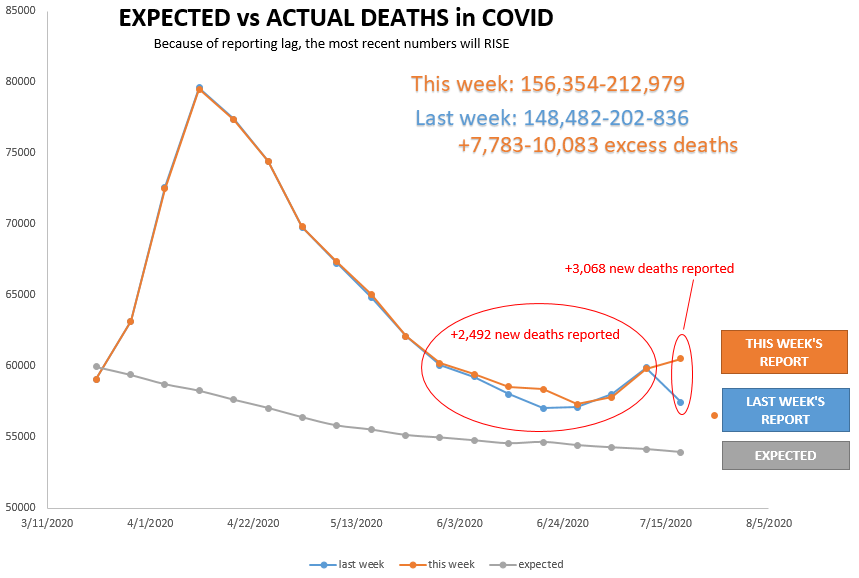
**NEW DATA Note: 2019 PRE COVID.**
CDC 2019 mortality data is out.
White: -2.2%
Black: +2.7%
Asian/PI: +1.5%
AI/AN: +0.5%
Hispanic: -1.4%
Total: -2.0%
(no group showed changes that fall out of the 95% confidence interval for comparing rates)
/1
CDC 2019 mortality data is out.
White: -2.2%
Black: +2.7%
Asian/PI: +1.5%
AI/AN: +0.5%
Hispanic: -1.4%
Total: -2.0%
(no group showed changes that fall out of the 95% confidence interval for comparing rates)
/1

By sex, both displayed decreasing rates: (3% in ♀️, 2% in ♂️). The ratio is 3.7♂️ per 1♀️ (20-year-range 3.5-4.4)
♂️-to-♀️ suicide ratio is highly influenced by societal & cultural factors; each country's gender ratio is different (Canada 2.9-3.5, Hong Kong 1.8-2.4)
/2
♂️-to-♀️ suicide ratio is highly influenced by societal & cultural factors; each country's gender ratio is different (Canada 2.9-3.5, Hong Kong 1.8-2.4)
/2

Both sexes showed decreases in virtually every age group, save the 25-39 male group which showed a tiny increase. The biggest drops were seen in child/teen males, and females <40.
/3
/3

This is about as granular as I can get. CDC-coded race, sex, and ages are compared to 2018 levels to show the areas of greatest change.
/4
/4

Takeaway, part 1:
All of the Chicken Littles who rang the COVID alarm (and got serious media play) by claiming "US increasing rates will get even worse in 2020" were doubly wrong.
* rates did not increase during COVID
* OR 2019!!
"predict by trend experts" are USELESS
/5
All of the Chicken Littles who rang the COVID alarm (and got serious media play) by claiming "US increasing rates will get even worse in 2020" were doubly wrong.
* rates did not increase during COVID
* OR 2019!!
"predict by trend experts" are USELESS
/5
Takeaway, part 2:
Like we are seeing in 2020 with reductions in suicides, there is very likely systemic racism embedded. That is, improvements are first seen in White Americans, generally.
/6
Like we are seeing in 2020 with reductions in suicides, there is very likely systemic racism embedded. That is, improvements are first seen in White Americans, generally.
/6
Likely the actual data of 2019+2020 in America will be that suicide rates overall improved slightly; completely counter to the narrative of so-called experts spewing all over the media in 2019/20.
Descriptive data is just that - it is not prescriptive.
Descriptive data is just that - it is not prescriptive.
• • •
Missing some Tweet in this thread? You can try to
force a refresh








